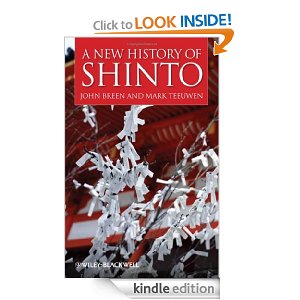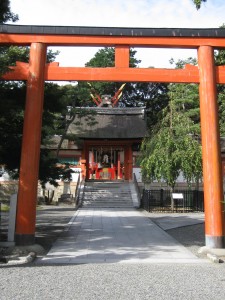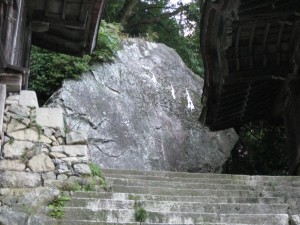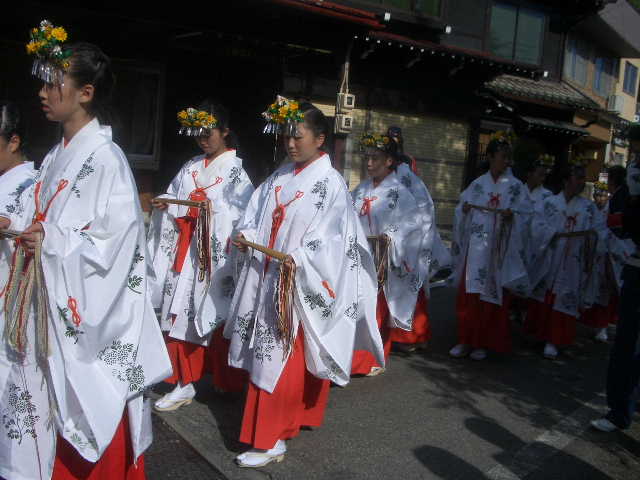
The book impresses throughout for the wealth of detail and depth of research. Much of the information is unavailable elsewhere in English, and the extensive use of primary material enables those without Japanese ability to gain insight into scholarly work in the field. Influential figures are introduced such as folklorist Yanagita Kunio (1875-1962) and scholar Kuroda Toshio (1926-93). The latter argued that there was no such thing as ‘ancient Shinto’ in the sense of an independent religion, since kami worship was subsumed into esoteric Buddhism until Meiji times. Breen and Teeuwen follow in his footsteps but with a difference, since they identify the roots of modern Shinto in the medieval period, particularly the 15th-century thinking of Yoshida Kanetomo. ‘Before Kanetomo’s time, Shinto had no currency in a sense at all recognizable today,’ the authors emphasise.

The Daigengu at Yoshida Shrine, part of the legacy of the 15th century push for dominance
The chapter on Hie Shrine forms almost a third of the book, and for all the fascinations (at one time it was the biggest in Japan), one wonders about its selection over Ise given the obvious match with the imperial themes that underlie the other chapters. The authors respond by saying Ise is unrepresentative, though the charge could be more tellingly laid against the choice of ritual which is used only at the time of the emperor’s inauguration. The murky origins and development of Ise offer material well suited to the book’s ‘Alternative Approach’, and with the shikinen sengu rebuilding due for completion in 2013 it would seem an opportunity lost to capitalise on the attention the shrine will get. It would have allowed too for discussion of Watarai Shinto, which is strangely missing from the book.
But this is in no way to detract from the many strengths of the book. Curiously for a history, it provides a particularly useful survey of the contemporary scene, in which the reader learns about such matters as the financing of shrines, the number of visitors, and the percentage of the population that partake in Shinto rites. There’s talk too of the shortcomings of the Jinja Honchō (abbreviated by the authors as NAS – National Association of Shrines), which include a relative lack of concern with environmental matters and an Ise campaign that causes friction with local shrines. The suggestion is of a disconnect between policy makers and ordinary practitioners. Non-mainstream Shinto is also featured, with illuminating sections on Fushimi Inari, the Yasukuni controversy, and Sectarian Shinto. There are important matters discussed here that feature in no other book in English of which I know.

The Golden Rock at Hie Shrine, where worship probably originated
At the end one can’t help wondering what exactly is this puzzling thing called Shinto. Traditionalists see it in terms of continuity, but for Breen and Teeuwen it’s characterised by change, conflict and construct. ‘Shinto in our view, appears not as the unchanging core of Japan’s national essence, but rather as the unpredictable outcome of an erratic history,’ they write. As such this revisionist book is much in keeping with the work of leading scholars such as Allan Grapard, who has suggested the need to talk of ‘Shintos’ rather than a unified Shinto. It’s a measure of the book’s achievement that it has managed to introduce such scholarly notions in a way that is at once accessible and instructive. Even those sceptical about its claims would have to admit the solidity of the research, and the book renders valuable service by opening up debate about Shinto’s origins to a general readership. Its influence is likely to be long-lasting.

At the end one is left pondering what exactly is this puzzling thing called Shinto?

Leave a Reply